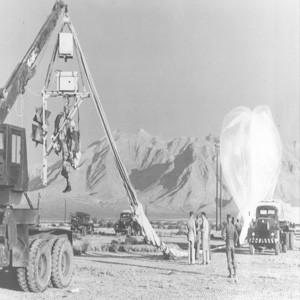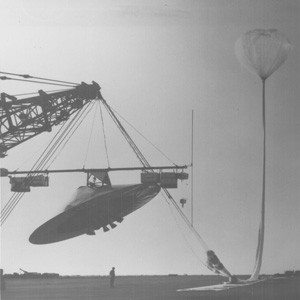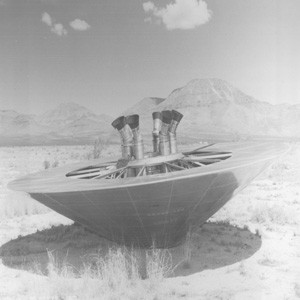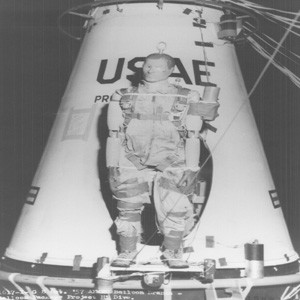The term “Unidentified Flying Object,” or UFO, often evokes images of alien spacecraft and extraterrestrial encounters. But what exactly constitutes a UFO? A UFO is any aerial phenomenon that cannot be immediately identified by the observer. This can range from unusual lights in the sky to objects with seemingly inexplicable flight patterns.
 A black and white photo of a blurry object in the sky, potentially a weather balloon.
A black and white photo of a blurry object in the sky, potentially a weather balloon.
The History of UFO Sightings and Investigations
The modern fascination with UFOs began in the late 1940s, most notably with the 1947 Roswell incident and pilot Kenneth Arnold’s sighting of nine unusual objects near Mount Rainier. Arnold described the objects as moving “like saucers skipping on water,” leading to the popularization of the term “flying saucer.” These early sightings sparked public interest and led to government investigations, such as Project Blue Book conducted by the U.S. Air Force.
While initial investigations focused on debunking sightings as misidentified aircraft, weather phenomena, or hoaxes, some cases remained unexplained. This fueled speculation about the possibility of extraterrestrial origins.
From UFOs to UAPs: A Shift in Terminology
In recent years, there has been a shift away from the term “UFO” towards “Unidentified Aerial Phenomena” (UAP). This change reflects a more scientific and less sensationalized approach to the topic. UAP encompasses a broader range of aerial anomalies and avoids the immediate association with extraterrestrial hypotheses.
 A black and white photo of what appears to be a weather balloon in the sky.
A black and white photo of what appears to be a weather balloon in the sky.
The Ongoing Search for Answers
Despite decades of research and investigation, the nature of many UAP remains a mystery. While some sightings can be attributed to conventional explanations, others continue to defy easy categorization. This ongoing uncertainty has led to the development of various theories, ranging from advanced military technology to extraterrestrial visitation.
 A black and white photo of a blurry object against a cloudy sky, possibly a bird or plane.
A black and white photo of a blurry object against a cloudy sky, possibly a bird or plane.
The renewed interest in UAP, particularly within government and scientific communities, signifies a commitment to understanding these unexplained phenomena. Organizations like the Pentagon’s Airborne Object Identification and Management Synchronization Group (AOIMSG) are dedicated to collecting and analyzing UAP data.
The Significance of Unidentified Aerial Phenomena
The study of UAPs extends beyond simple curiosity. These phenomena have implications for national security, aviation safety, and our understanding of the universe. Further investigation is crucial to determining the nature of these objects and their potential impact on our world.
 A black and white photo of an object in the sky that resembles a kite or balloon.
A black and white photo of an object in the sky that resembles a kite or balloon.
Whether ultimately explained as natural phenomena, human-made objects, or something more extraordinary, the enduring mystery of unidentified aerial phenomena continues to capture the human imagination. The quest to understand these enigmatic sightings remains an ongoing and evolving process.
